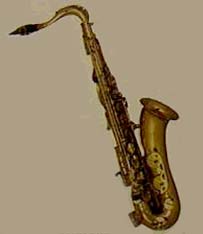The Saxophone
 |
The soprano saxophone is 40 cm long and has a range of about 2 1/2 octaves, from A3-flat to E6-flat. The alto sax covers D3 to A5-flat. The family of saxophones patented in 1846 by Adolphe Sax combines the single reed of the clarinet with the bore and fingering patterns of the oboe, producing the tonal qualities of neither. Saxophones are made in eight sizes and pitch levels, spanning the entire spectrum of wind-instrument pitches. The most common are the alto and tenor saxophones. They have been effectively used in jazz bands and popular dance orchestras.
|
Woodwind instruments
Musical instruments